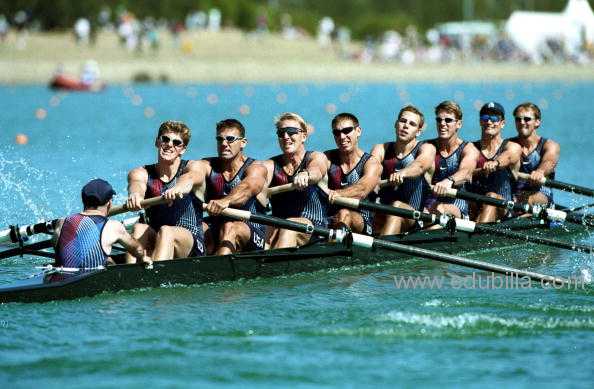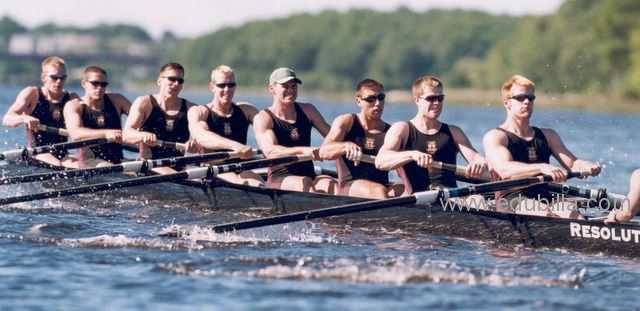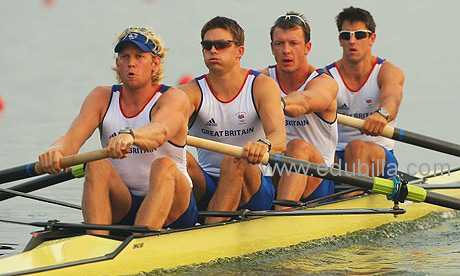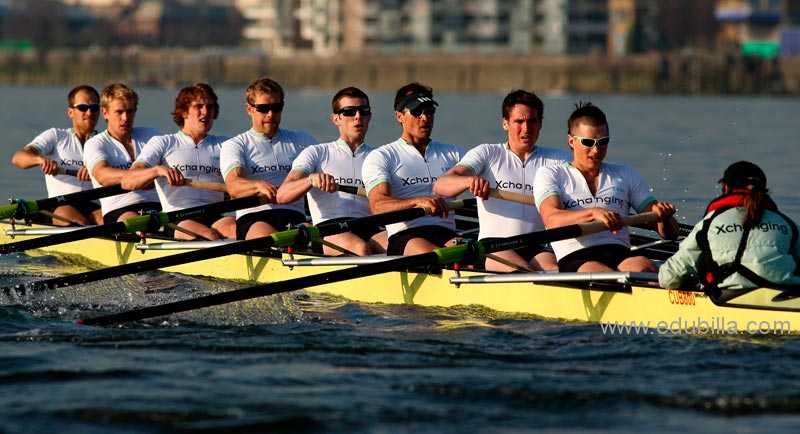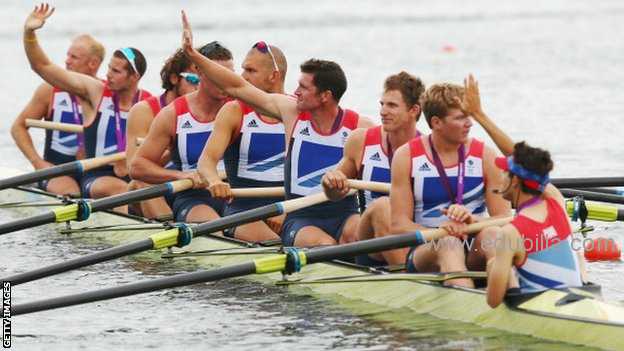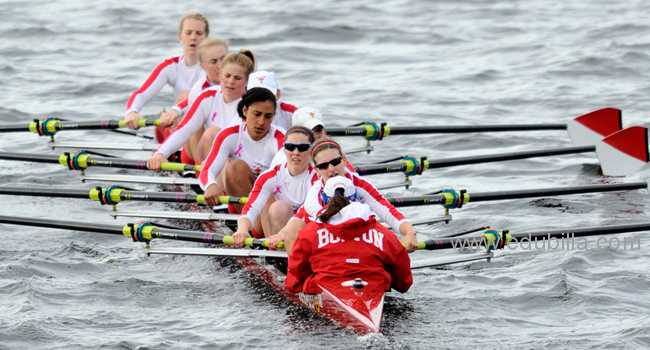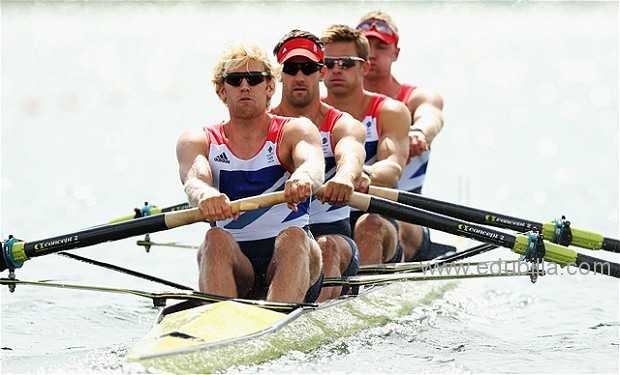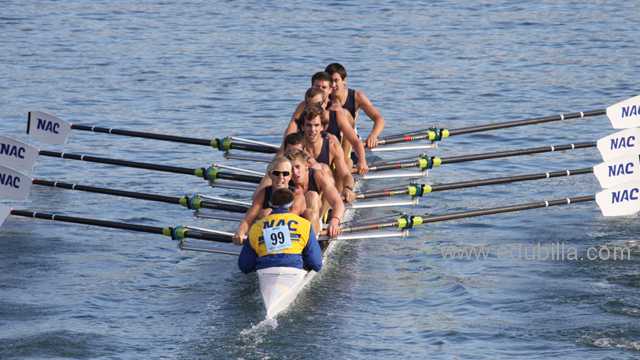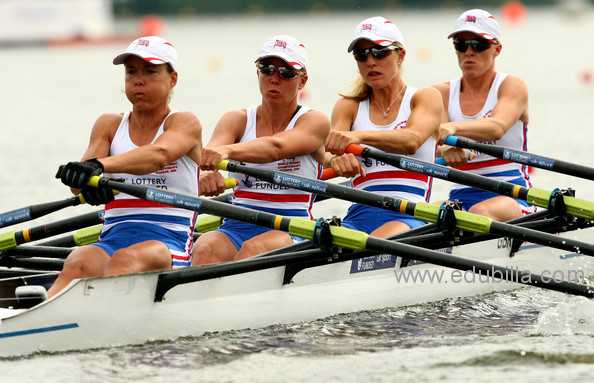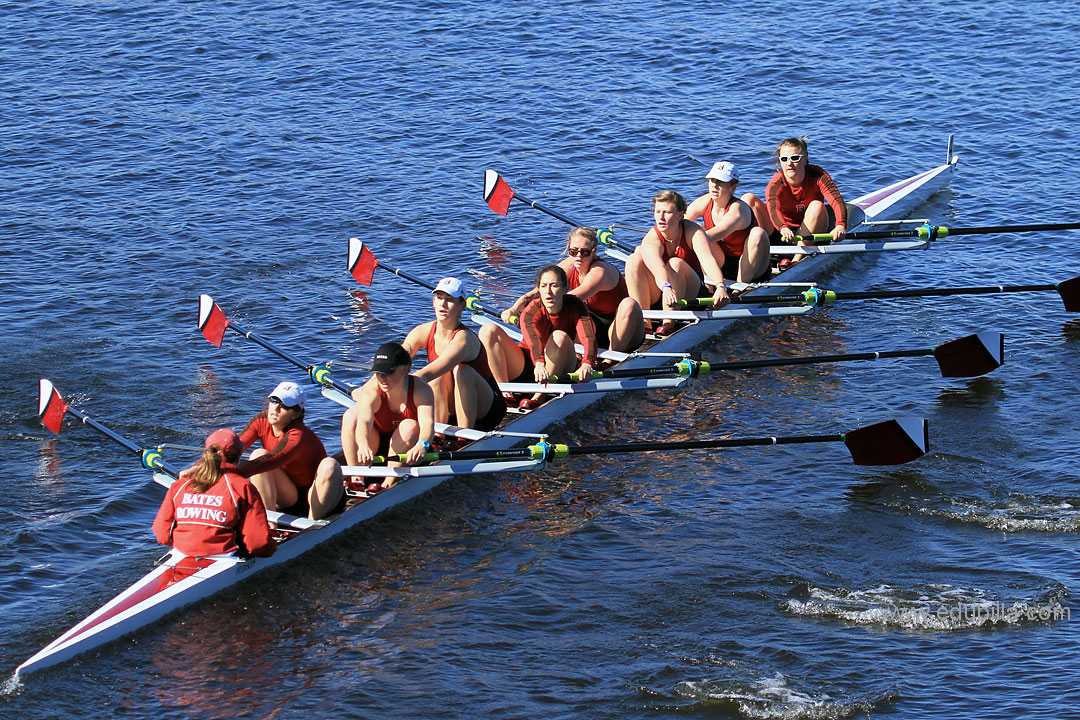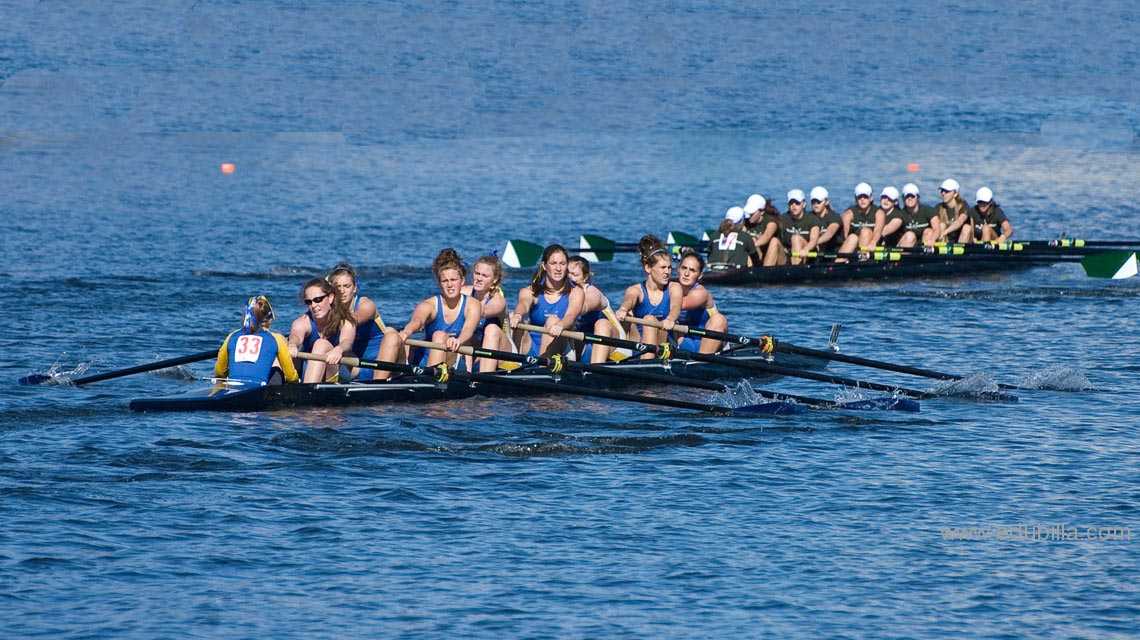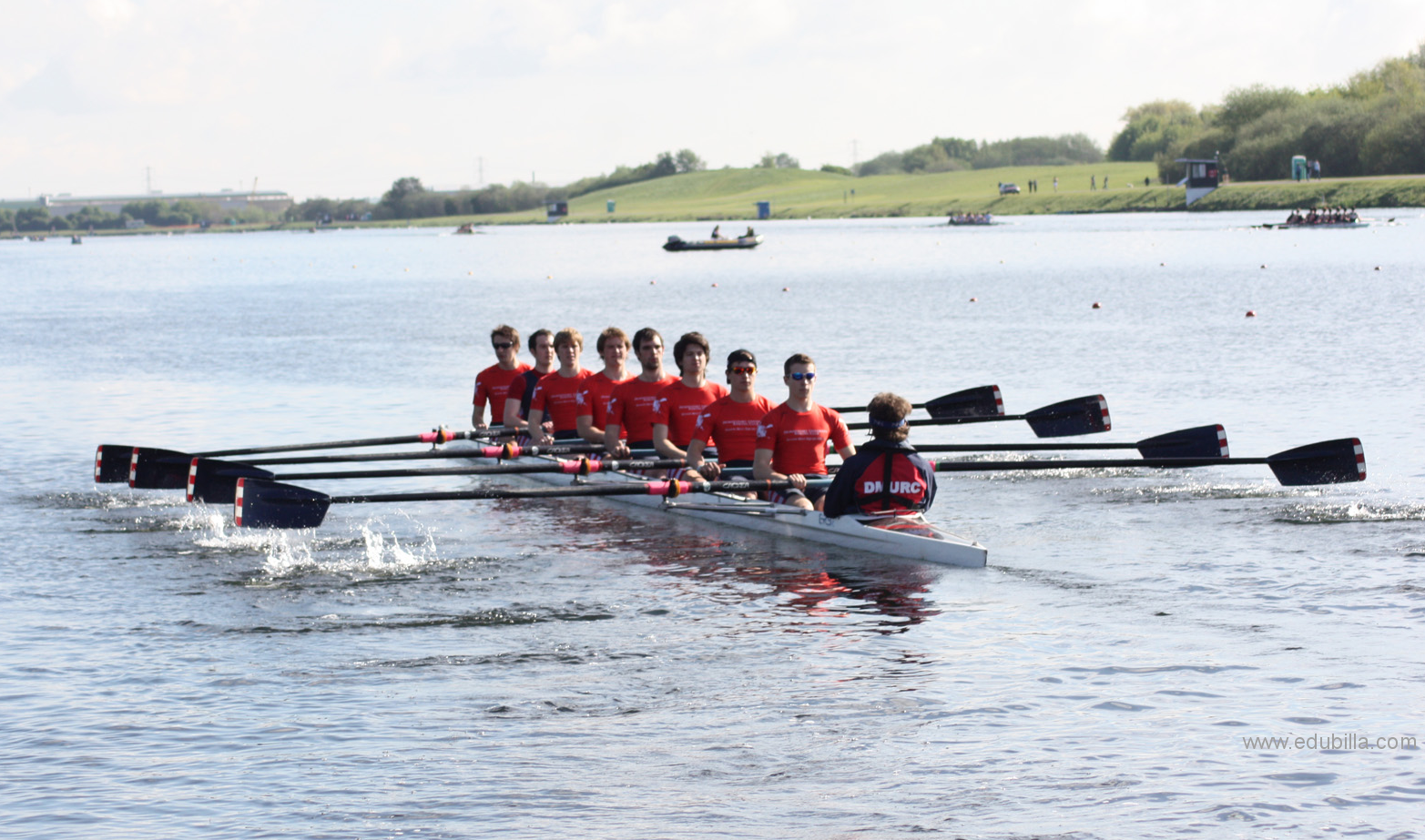
Overview Of Rowing
Rowing, often referred to as crew in the United States, is a sport with origins back to Ancient Egyptian times. It is based on propelling a boat (racing shell) on water using oars. By pushing against the water with an oar, a force is generated to move the boat. The sport can be either recreational - focusing on learning the technique of rowing, or competitive - where athletes race against each other in boats.There are a number of different boat classes in which athletes compete, ranging from an individual shell (called a single scull) to an eight person shell with coxswain (called a coxed eight).
Modern Rowing Game:
Modern rowing as a competitive sport can be traced to the early 18th century when races were held between professional watermen on the River Thames in London, United Kingdom. Often prizes were offered by the London Guilds and Livery Companies. Amateur competition began towards the end of the 18th century with the arrival of "boat clubs" at the British public schools of Eton College and Westminster School. Similarly, clubs were formed at the University of Oxford, with a race held between Brasenose College and Jesus College in 1815. At the University of Cambridge the first recorded races were in 1827. Public rowing clubs were beginning at the same time; in England Leander Club was founded in 1818, in Germany Der Hamburger und Germania Ruder Club was founded in 1836 and in the United States Narragansett Boat Club was founded in 1838 and Detroit Boat Club was founded in 1839. In 1843, the first American college rowing club was formed at Yale University.
International Rowing Federation:
The International Rowing Federation (French: Fédération Internationale des Sociétés d’Aviron, abbreviated FISA) is responsible for international governance of rowing and was founded in 1892 to provide regulation at a time when the sport was gaining popularity. Across six continents there are now 118 countries with rowing federations that participate in the sport.
Rowing is one of the oldest Olympic sports and has been competed since 1900. Women's rowing was added to the Olympic programme in 1976. Today, only fourteen boat classes are raced at the Olympics, across men and women. Each year the World Rowing Championships is held by FISA with 22 boat classes raced. In Olympic years only the non-Olympic boat classes are raced at the World Championships. The European Rowing Championships are held annually, along with three World Rowing Cups in which each event earns a number of points for a country towards the World Cup title. Since 2008, rowing has also been competed at the Paralympic Games.
Game Rules
Rules of Racing:
There are many differing sets of rules governing racing, and these are generally defined by the governing body of the sport in a particular country—e.g., British Rowing in England and Wales, Rowing Australia in Australia, and USRowing in the United States. In international competitions, the rules are set out by the world governing body, the Fédération Internationale des Sociétés d'Aviron (FISA). The rules are mostly similar but do vary; for example, British Rowing requires coxswains to wear buoyancy aids at all times, whereas FISA rules do not.
(a) Junior: A Junior is a competitor who in the current calendar year does not attain the age of 19, or who is and has been continuously enrolled in secondary school as a full time student seeking a diploma. A competitor thus ceases to be a Junior after December 31 of the year of his or her 18th birthday, or of the year in which he or she completes the 12th grade of secondary school, having been a full time student, whichever is later.
(b) Master: A Master is a competitor who has attained or will attain the age of 21 during the current calendar year. A competitor’s age is determined as of December 31 of the current calendar year, rounded down to the highest contained integer. A competitor thus becomes a Master on January 1 of the year of his or her 21st birthday. A Masters crew shall be comprised exclusively of Masters rowers, but the coxswain need not be a Master.
(1) Masters crews shall be classified by age according to the following categories: (AA) 21 to 26 years, (A) 27 to 35 years, (B) 36 to 42 years, (C) 43 to 49 years, (D) 50 to 54 years, (E) 55 to 59 years, (F) 60 to 64 years, (G) 65 to 69 years, (H) 70 to 74 years, (I) 75 to 79 years, (J) 80 and over. The age category of a Masters crew shall be determined by the average age of the rowers in the crew, rounded to the nearest integer. The age of a coxswain shall not be counted. The ages of individual rowers need not fall within the age category, so long as each rower is a Master and so long as the average age of the crew falls within the applicable category.
Classifications -- By Weight
(a) A competitor’s classification by skill shall be determined separately with respect to sweep events and sculling events. Except for the provisions of subsection (b)(2) below (Elite status affecting scull or sweep status), a competitor’s classification in one category shall not affect his or her classification in the other. A competitor’s classification by skill shall not be determined separately with respect to open events and lightweight events, and thus a competitor’s status as Elite, Senior or Intermediate is applicable regardless of weight class.
(b) Competitors shall be classified according to skill by the following criteria:
-(1) Intermediate: A competitor is an Intermediate who has not advanced to the status of Senior or Elite.
-(2) Senior: A competitor is a Senior who has won any intermediate or senior event over 2,000 meters at the USRowing National Championships or at the Royal Canadian Henley Regatta, and who has not advanced to the status of Elite. A competitor who is an Elite as a sweep rower shall be advanced to Senior for all sculling events, and a competitor who is an Elite as a scull rower shall be advanced to Senior for all sweep events.
-(3) Elite: A competitor is an Elite who has been a member of a USRowing National Team as a competitor (including as a spare) in the category at issue, other than in a Junior or Masters event.
(c) All trials events to select the National Team, except those for Junior or Masters events, shall be classified as Elite events.
(d) Junior or Masters races do not effect a competitor’s classification by skill under this Rule.
(e) All changes in classification by skill shall take effect on January 1 following the year of competition.
(f) Any other provision of these rules notwithstanding, a competitor who is not an amateur shall be deemed an Elite for all events, whether sweep or sculling, open or lightweight.
Lightweight vs. Open Weight
An athlete of any weight can enter the open categories, although the average woman in an open race will approach 6' in height and an average open weight man 6'6". Lightweight men cannot weigh more than 160 pounds and the average weight in the entire boat cannot exceed 155 pounds. Lightweight women cannot weigh more than 130 pounds and the average weight in the entire boat cannot exceed 125 pounds.
Equipments Need For Rowing
Blade:
The flattened, or spoon-shaped, part of an oar that touches the water during rowing.
Boot:
A device that holds the bow of a boat before a race, then drops below the water on the starting signal.
Bow:
The forward section of a boat.
Bowball:
A rubber ball attached to the bow tip of a shell to protect against damage and injury in case of a collision.
Button:
A collar around the shaft of the oar that keeps the oar from slipping through the oarlock and can be adjusted up and down the oar to increase or decrease leverage.
Cox Box:
An electronic device used by the coxswain to amplify his or her voice and broadcast it through speakers located throughout the shell.
Double:
A sculling boat for two rowers.
Eight:
A sweep-oar boat with eight rowers and a coxswain.
Fin:
A small, flat piece of wood or plastic attached perpendicularly to the bottom of the shell to help the shell stay on a true course; also known as a "skeg".
Four:
A sweep-oar boat for four rowers, with or without a coxswain.
Gate:
A bar across the oarlock to prevent the oar from popping out.
Gunwale:
A horizontal strip of wood running the length of a shell, to which the ribs and other parts traditionally are attached.
Handle:
The part of an oar held by an oarsman.
Keel:
The body of the shell that runs from box to stern.
Loom:
The part of an oar between the blade and the handle.
Oar:
A lever used to propel and steer a boat through water, consisting of a long shaft of wood with a blade at one end.
Oarlock:
A U-shaped device on a boat's gunwale where the oar rests and swings; also called a "rowlock".
Outrigger:
A framework attached to the shell and used to support the oarlock; also called a "rigger".
Pin:
The metal rod upon which the oarlock is mounted.
Rib:
A U-shaped piece of fabricated wood, aluminium or carbon fibre that supports the hull by fitting inside the shell between the keel and the gunwale.
Rigger:
A framework attached to the shell and used to support the oarlock; also called an "outrigger".
Rowlock:
A device on a boat's gunwale where the oar rests and swings; also called an "oarlock".
Rudder:
A device under the shell of a boat used to steer it.
Scull:
One of two short oars worked from side to side over the stern of a boat as a means of propulsion.
Shell:
A rowing boat.
Skeg:
A small, flat piece of wood or plastic attached perpendicularly to the bottom of the shell to help the shell stay on a true course; also known as a "fin".
Sleeve:
The plastic jacket on the shaft of the oar upon which is mounted a button, used to secure the blade to the oarlock.
History Of Rowing
The history of rowing as a sport has one of the oldest traditions in the world. What began as a method of transport and warfare eventually became a sport with a wide following, and a part of the cultural identity of the English speaking world.
Today rowing is an amateur sport and an Olympic event. When Pierre de Coubertin created the Modern Olympics, he modelled the International Olympic Committee on the Henley Stewards. The stewards organise the Henley Royal Regatta, one of rowing's most prestigious events.
Rowing in India:
India's history in rowing dates back to the British era. The first club, the Calcutta Rowing Club was founded in 1858. The Rowing Federation of India administers the sport in the country. India's first ever Asian Games gold medal was won by Bajrang Lal Takhar in 2010 but the country has never won an Olympic medal in the sport. Three Indian rowers have qualified for the 2012 London Olympics
First Rowing Club:
Public rowing clubs were beginning at the same time; in England Leander Club was founded in 1818, in Germany Der Hamburger und Germania Ruder Club was founded in 1836 and in the United States Narragansett Boat Club was founded in 1838 and Detroit Boat Club was founded in 1839. In 1843, the first American college rowing club was formed at Yale University.
First gold medal:
Great Britain won their first gold medal of the London 2012 Olympics as rowers Helen Glover and Heather Stanning triumphed in the women's pair.
Olympic history:
Rowing has been staged at all the editions of the Olympic Games, except in 1896 in Athens. It was, however, on the programme, but a stormy sea compelled the organisers to cancel the events.
Women made their debut at the Games in 1976 in Montreal. They competed in a smaller programme. The Olympic Games in 1996 in Atlanta marked the introduction of the lightweight events.
Up to the 1960s, the USA dominated Olympic rowing. Then it was the turn of the Soviet Union, which in turn gave up its place in the 1970s-80s to the all powerful GDR (East Germany). These days, the reunified German team is among the best in the world.
Origin Of Rowing
First Rowing Races:
The first known "modern" rowing races began from competition among the professional watermen in the United Kingdom that provided ferry and taxi service on the River Thames in London. Prizes for wager races were often offered by the London Guilds and Livery Companies or wealthy owners of riverside houses.The oldest surviving such race, Doggett's Coat and Badge was first contested in 1715 and is still held annually from London Bridge to Chelsea.
First Women's Rowing Game:
Notwithstanding its male domination, women’s rowing can be traced back to the early 19th century, and an image of a women’s double scull race made the cover of Harper’s Weekly in 1870. In 1892 four young women (Zulette Lamb and Lena, Agnes, and Caroline Polhamus) started ZLAC Rowing Club in San Diego, California when they borrowed a boat and began rowing on San Diego Bay. The club considers itself the oldest all-women's rowing club in continuous existence in the world. ZLAC is still popular today with female rowers young and old who row from the boathouse on Mission Bay, though ironically the club's head coach is a man (2013). In 1927, the first rowing event for women between Oxford and Cambridge was held (for the first few years it was an exhibition, and it later became a race). And in 1954, the women's events were added to the European Rowing Championships. In 1988, the first Henley Women's Regatta was held. On 27 April 1997, one of the last bastions of rowing was breached when, at an Extraordinary General Meeting, Leander Club voted to admit women as members. This rule met a condition imposed by UK Sport and qualified Leander to receive a £1.5 million grant for refurbishment from the Lottery Sports Fund.
popularity:
During the 19th century these races were to become numerous and popular, attracting large crowds. A contemporary sporting book lists 5000 such matches in the years 1835 to 1851.Prize matches amongst professionals similarly became popular on other rivers throughout Great Britain in the 19th century, notably attracting vast crowds on the Tyne. The oldest surviving such race, Doggett's Coat and Badge was first contested in 1715 and is still held annually from London Bridge to Chelsea.
Governing Bodies
International Rowing Federation(FISA):
The International Rowing Federation which is the governing body for international Rowing. Its current president is Jean-Christophe Rolland who succeeded Denis Oswald at a ceremony held in Lucerne in July 2014.
FISA first organized a European Rowing Championships in 1893. An annual World Rowing Championships was introduced in 1962.Rowing has also been conducted at the Olympic Games since 1900 (cancelled at the first modern Games in 1896 due to bad weather)
The Rowing World Cup, World Rowing Championships, and other such competitions are overseen by this organization.
FISA’s Goals and Objectives:
The goals and objectives of FISA are to effectively and efficiently: DEVELOP, PROMOTE, PRESENT, GOVERN and PROTECT THE ENVIRONMENT through the sport of rowing.
FISA’s Vision:
To encourage the development of the sport of rowing and strengthen the bonds that unite those who practice it.
FISA’s Mission:
To make rowing a universally practised and globally relevant sport. To spread the sport in all its forms.
World Rowing Cup:
The World Rowing Cup is an international rowing competition organized by FISA (the International Rowing Federation). It first began in 1997 and comprises three regattas (apart from in 2001 when there were four) held throughout early summer. In each event points are awarded to the top seven finishing boats and an overall winner determined after the last world cup regatta each year. During the regattas the current leader in each event must wear yellow bibs. The World Rowing Cup has only been staged outside of Europe on 3 occasions, in 2001 Princeton and in both 2013 and 2014 Sydney.
World Rowing Championships:
The World Rowing Championships is an international rowing regatta organized by FISA (the International Rowing Federation). It is a week-long event held at the end of the northern hemisphere summer and in non-Olympic years is the highlight of the international rowing calendar.
The first event was held in Lucerne, Switzerland, in 1962.The event then was held every four years until 1974, when it became an annual competition. Also in 1974, Men's lightweight and Women's open weight events were added to the championships. In 1985 Women's lightweight events were added to the schedule.
Since 1996, during (Summer) Olympic years, the Junior World Rowing Championships are held at the same time.
In 2002 adaptive rowing events were introduced for the following classes of disability: LTA (legs, trunk and arms), TA (trunk, arms), and A (arms-only). In 2009 the A category was replaced by AS (arms and shoulders), and an ID (intellectually disabled) category was added (but then removed after the 2011 Championships).
Olympics:
The Olympic Games are held every four years, where only select boat classes are raced (14 in total):
-Men: quad scull, double scull, single scull, eight, coxless four, and coxless pair
-Lightweight Men: coxless four and double scull
-Women: quad scull, double scull, single scull, eight, and coxless pair
-Lightweight Women: double scull
At the end of each year, the FISA holds the World Rowing Championships with events in 22 different boat classes. Athletes generally consider the Olympic classes to be premier events . During Olympic years only non-Olympic boats compete at the World Championships.
To Visit FISA Click Here
Awards Related To Rowing
World Rowing Female Crew of the Year:
Women's Single Sculls
Women's Double Sculls
Women's Quadruple Sculls
Women's Eight
Women's Pair
Women's Double Sculls
Lightweight Women's Double Sculls
Women's Double Sculls
Women's Single Sculls
Women's Single Sculls
World Rowing Coach of the Year
World Rowing Male Crew of the Year
World Rowing Para-Rowing Crew of the Year
Distinguished Services to Rowing Award
US Rowing Award:
USRowing Medal
USRowing Male Athlete of the Year
USRowing Female Athlete of the Year
Jack Franklin Lifetime Achievement Award
Jack Kelly Award
Anita DeFrantz Award
Isabel Bohn Award
US Rowing Fan's Choice Awards:
Junior Athlete of the Year
Collegiate Athlete of the Year
Masters Athlete of the Year
National Team Athlete of the Year -
Junior Coach of the Year
Collegiate Coach of the Year
Masters Coach of the Year
Sample Documents Of Rowing
-Andre Agassi

